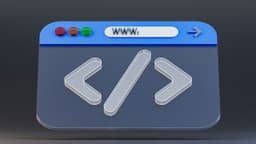CSS Padding vs Margin: Understanding the Space in Style
Creating an effective website involves careful consideration of spacing. CSS plays a crucial role in managing the space around and within your elements through padding and margin. Recognizing the difference between these two properties can significantly enhance your design.
Imagine a box representing an element on your webpage, such as a button or a text paragraph. This box model includes four parts: content, padding, border, and margin. The padding resides between the content and the border, while the margin is located outside the border.
What is Padding?
Padding is the space between an element's content and its border. It acts as a cushion around the content, serving several purposes:
- Increases readability by providing text with ample space.
- Allows background colors or images to be visible around the content.
- Makes buttons or features more prominent and clickable.
Adding padding to an element removes the crowded appearance of the content. For example, applying padding to a paragraph will create space between the text and the edges. You can set padding for all four sides or specify different values for each side, offering flexible design options.
Here's a simple CSS example:
Css
In this case, all paragraphs receive a padding of 10 pixels on each side.
What is Margin?
Margin is the space surrounding an element's border. It acts as a barrier around the element, maintaining distance between it and other page elements. The margin is vital for:
- Defining the layout by evenly spacing elements.
- Preventing elements from overlapping and cluttering the design.
- Pushing the content away from the edges of the browser window or other elements.
Adjusting the margin does not change the element's size but increases the space around it. This effect can create a clean, minimalist look by ensuring elements are not too close to each other. Like padding, margins can also be defined on all sides or individually for greater design flexibility.
Consider this simple CSS for margins:
Css
Here, every h1 headline will have a top and bottom margin of 20 pixels, with no extra space on the sides.
Key Differences Between Padding and Margin
Both padding and margin manage space but in different ways:
- Padding is located within the border, while margin is outside.
- Padding can affect the element's background color or image; margin does not.
- Margins of adjacent elements can overlap (margin collapsing), but padding does not have this effect.
When to Use Padding and When to Use Margin?
Use padding when you aim to:
- Increase internal space for an element, like a button that should be easy to click.
- Allow the background to show inside the element's border but away from the content.
Use margin when you intend to:
- Create space between elements.
- Center an element in a container by setting both left and right margins to auto.
Best Practices
Consistency is key when using CSS. Purposefully apply padding and margin to create a balanced and rhythmic design. Ensure text is readable with adequate padding and maintain appropriate separation between elements using margin.
Padding and margin both generate space in web designs, but they function differently. Padding influences the interior of the box, while margin affects the exterior. Mastering their usage will enhance your designs significantly.












